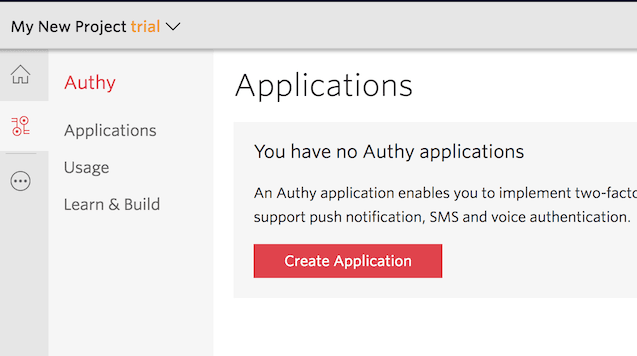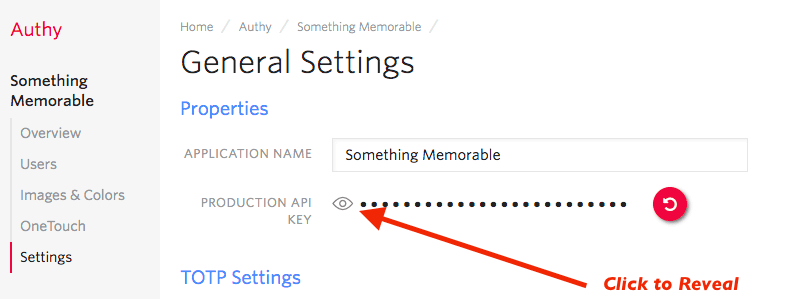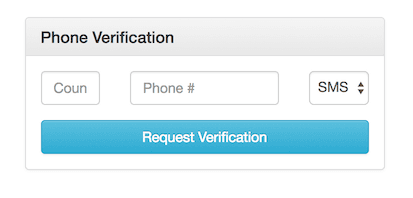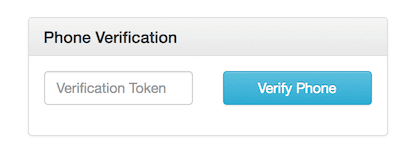Twilio Verify Phone Verification Ruby on Rails Quickstart
Warning
Verify v1 API has reached End of Sale. It is now closed to new customers and will be fully deprecated in the future.
For new development, we encourage you to use the Verify v2 API. v2 has an improved developer experience and new features, including:
- Twilio server-side SDKs in multiple languages
- PSD2 Secure Customer Authentication Support
- Improved Visibility and Insights
Existing customers will not be impacted at this time until Verify v1 API has reached End of Life. For more information about migration, see Migrating from 1.x to 2.x.
Phone Verification is an important, high-confidence step in a registration flow to verify that a user has the device they claim to have. Adding Twilio Verify phone verification to your application will greatly reduce your number of fraudulent registrations and protect future application users from having their numbers registered by scammers.
This quickstart guides you through creating a Ruby, Rails and AngularJS app that requires a phone verification step to create an account. Two channels of Phone Verification are demoed:
- SMS
- Voice
Ready to add phone verification to a demo app? Enter stage left!
Either sign up for a free Twilio trial, or sign into an existing Twilio account.
Once logged in, visit the Authy Console. Click on the red 'Create New Application' (or big red plus ('+') if you already created one) to create a new Authy application then name it something memorable.

Twilio will redirect you to the Settings page next:

Click the eyeball icon to reveal your Production API Key, and copy it somewhere safe. You will use the API Key during the application setup step below.
Start by cloning our Ruby on Rails repository. Enter the directory and use bundle to install all of our dependencies:
bundle install
- Open the file
config/application.example.yml - Change
ACCOUNT_SECURITY_API_KEYto the API Key from the above step - Now, save the file as
config/application.yml
If your file is saved as config/application.yml, the server will load it automatically as it starts up.
Enter the API Key from the Authy console and optionally change the port.
ACCOUNT_SECURITY_API_KEY: YOUR APP_KEY
Next, create the tables:
bin/rails db:migrate
And then... actually, that's all the setup you'll need.
Now, launch the application with:
rails server
Assuming your API Key is correctly entered, you'll soon get a message that the app is up!
Keeping your phone at your side, go to the Phone Verification page of the demo at http://localhost:3000/verification.
Enter a Country Code and Phone Number, then choose which channel to request verification over, 'SMS' or 'CALL' (Voice). Finally, hit the blue 'Request Verification' button and wait.

You won't be waiting long - you'll receive a phone call or SMS with the token. If you requested a phone call, as an additional security feature you may need to interact to proceed (enter a number on the phone keypad).
This function allows you to send the verification code over SMS or Voice depending on the 'via' variable.
1require 'authy'23class Api::VerifyController < ApplicationController4def start()5phone_number = params[:phone_number]6country_code = params[:country_code]7via = params[:via]89if !phone_number || !country_code || !via10render json: { err: 'Missing fields' }, status: :internal_server_error and return11end1213response = Authy::PhoneVerification.start(14via: via,15country_code: country_code,16phone_number: phone_number17)1819if ! response.ok?20render json: { err: 'Error delivering code verification' }, status: :internal_server_error and return21end2223render json: response, status: :ok24end2526def verify()27phone_number = params[:phone_number]28country_code = params[:country_code]29token = params[:token]3031if !phone_number || !country_code || !token32render json: { err: 'Missing fields' }, status: :internal_server_error and return33end3435response = Authy::PhoneVerification.check(36verification_code: token,37country_code: country_code,38phone_number: phone_number39)4041if ! response.ok?42render json: { err: 'Verify Token Error' }, status: :internal_server_error and return43end4445session[:authy] = true46render json: response, status: :ok47end48end
Either way you request the passcode, enter the token into the Verification entry form and click 'Verify Phone':

This function verifies the token for a user delivered over the Voice or SMS channel.
1require 'authy'23class Api::VerifyController < ApplicationController4def start()5phone_number = params[:phone_number]6country_code = params[:country_code]7via = params[:via]89if !phone_number || !country_code || !via10render json: { err: 'Missing fields' }, status: :internal_server_error and return11end1213response = Authy::PhoneVerification.start(14via: via,15country_code: country_code,16phone_number: phone_number17)1819if ! response.ok?20render json: { err: 'Error delivering code verification' }, status: :internal_server_error and return21end2223render json: response, status: :ok24end2526def verify()27phone_number = params[:phone_number]28country_code = params[:country_code]29token = params[:token]3031if !phone_number || !country_code || !token32render json: { err: 'Missing fields' }, status: :internal_server_error and return33end3435response = Authy::PhoneVerification.check(36verification_code: token,37country_code: country_code,38phone_number: phone_number39)4041if ! response.ok?42render json: { err: 'Verify Token Error' }, status: :internal_server_error and return43end4445session[:authy] = true46render json: response, status: :ok47end48end
And with that, your demo app is protected with Twilio's Verify! You can now log out to try the other channel.
Your demo app is now keeping fraudulent users from registering with your business and polluting the database. Next, check out all of the variables and options available to you in the Verify API Reference. For protecting your customers in an ongoing manner (with this same codebase) try the Ruby on Rails Authy Two-Factor Authentication Quickstart.
After that, take a stroll through the Docs for more Account Security demos and tutorials - as well as sample web applications using all of Twilio's products.